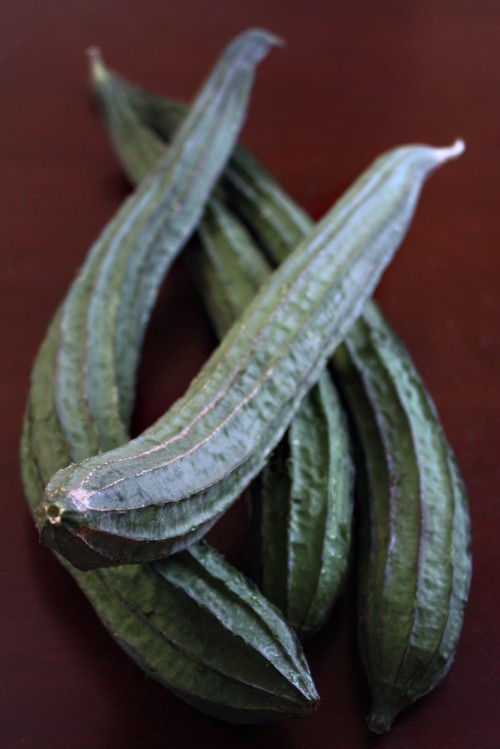Angled luffa (Luffa acutangula) goes by many names: Chinese okra, angled gourd, ridge(d) gourd, dishcloth gourd, etc. The Thai people call this vegetable buap (บวบ) or — to be prevent confusion with a similar gourd sans ridges called buap hom (บวบหอม) — buap liam (บวบเหลี่ยม).
This gourd is used in modern Thai cuisine in a simple stir-fry, along with other vegetables in a coconut-less vegetable curry called kaeng liang (แกงเลียง), or served lightly steamed as a relish accompaniment. I’m sure there are other ways this vegetable is used, but these three seem to be the most common.
To prepare an angled luffa, simply peel off the skin along with the ridges. This can be done easily with a vegetable peeler. I personally like to peel off the skin just enough to get rid of the ridges and level off the exterior, leaving a little bit of the edible skin on. Not everyone does that; I just like the crunchy texture from the skin remnants.
Then you can cut it into bite-sized pieces. I like to roll-cut it as that is the easiest way to make sure all the pieces are of the same size so they cook at the same rate. You can simply cut a peeled angled luffa crosswise, but you’ll see that the part that’s attached to the stem is more tapered than the other end, so be sure to trim the pieces from the wider part to get all the gourd pieces the same size.











